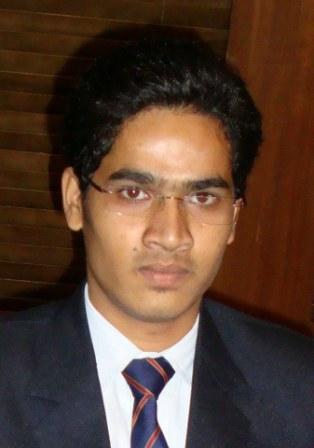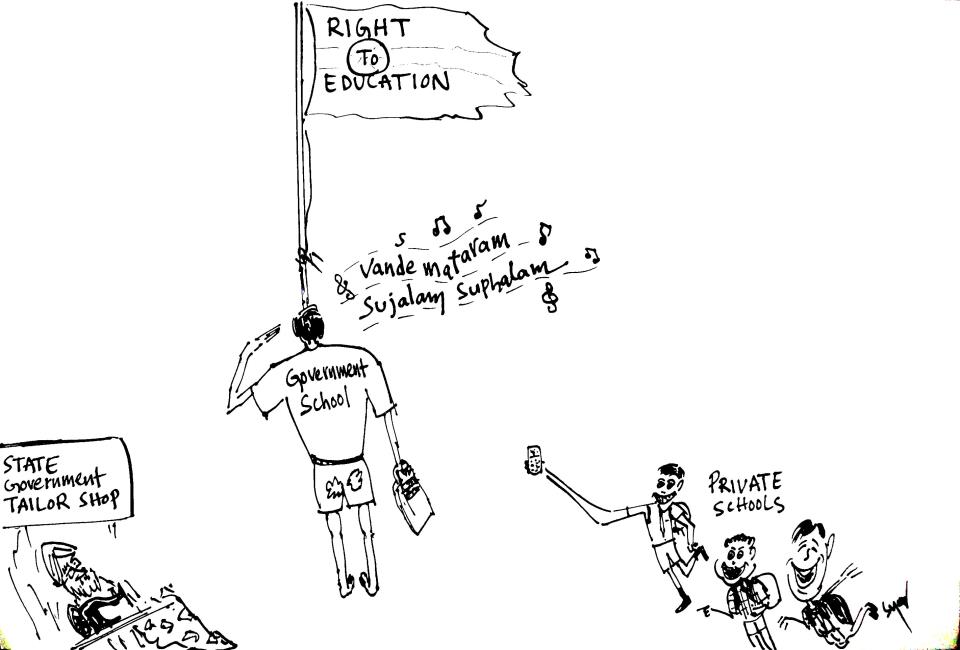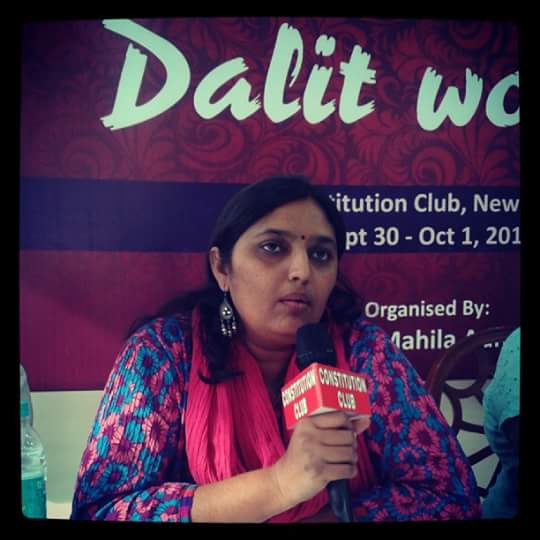Vikas Bagde
 Tihar is one of the most dazzling festivals of the Nepali people. Tihar is also known as Deepawali in the Terai region and falls during the month of October-November. This festival is celebrated for five days, beginning from the 13th day of the waning moon in October-November.
Tihar is one of the most dazzling festivals of the Nepali people. Tihar is also known as Deepawali in the Terai region and falls during the month of October-November. This festival is celebrated for five days, beginning from the 13th day of the waning moon in October-November.
In this festival, people worship Goddess Laxmi, known as the Goddess of wealth. All the houses of the city and villages are cleaned and decorated with lit oil lamps. During the night time, the cities and villages look like shining diamonds. Many people call Tihar as “Panchak Yama” which means the five days of the lord of the underworld. These five days are considered as very important which reflect respect not only for the human and god but also animals and birds like crows, dogs and cows who share a strong relationship with local people. During this festival many people decorate the exteriors of their houses by making Rangoli of different colors and flower petals of saipati or marigold spread on it, thus making the homes attractive and beautiful during the night time after oil lamps are lit on them.
There are many stories behind the celebration of Tihar. One of the stories is about the relationship between brothers and sisters. Yama, the god of death and Yamuna his sister, who has been far from her brother for many years. She wants to meet her brother so she uses different mediums, like a crow, a dog and a cow to visit her brother’s home and ask him to visit her. But even after doing all this, he doesn’t visit her and finally she goes to her brother’s home and worships him with flowers, tika and makes a circle with mustard oil, Dubo Grass (Cynodon Dactylon) and put Makhmali Mala (Globe Amaranth) (a type of pink flower) and she tells Yamaraj to not go anywhere till the oil, Dubo Grass and the flowers get dry. Due to this reason every sister worships her brother making a circle of mustard oil, putting mala (garland) of Makhmali flower and Dubo grass and prays for his long life and prosperity.
Days of Tihar
Day 1: Kag Tihar (Crow day)
The first day of Tihar is known as Kag Tihar. Early in the morning people cook different types of delicious foods and offer it to crows. People worship the crow and give them something to eat before they eat their own meals.
Day 2: Kukur Tihar: (Dog day)
The second day of Tihar is known as Kukur Tihar. In the Newar community this day is also called as Khicha Puja. Th dog is considered as the guardian of our homes and also the steed of fearful Bhairab, the god of destruction. On this day dogs are worshipped by applying tika and beautiful garland around their necks.
After doing the puja of the dog people give it delicious food to eat. On this day one can see all street dogs being worshipped and being given respect. This day is also observed as Narka Chaturdashi.
Day 3: Gai Tihar and Laxmi Puja
The third day of Tihar is known as Gai Tihar and Laxmi Puja. Early in the morning people worship the Gai (cow). People use the cow for a lot of things like milk, dung and urine for different purpose of purification. So, on this day people worship the Cow in a grand manner by putting tika on their foreheads, garlanding and feeding cows with grass and other delicious cooked food items.
In the day time people clean and decorate their houses by keeping garlands of Marigold and chrysanthemums at the door and windows. People make Rangoli outside the main doors of their houses and put lights in their house and light oil lamps on the Rangoli.
In the evening, the main door of the house is painted with red mud and an oil lamp is lit on it which is supposed to show the way to Goddess Laxmi to their house, to their Puja room. During the Puja the idol of Goddess Laxmi is kept on the Lotus flower, keeping the money which has been saved from many years and valuable things next to the idol. On this day from evening to night, groups of girls and boys go to houses, singing and dancing, what is known as Bhailo. By playing the Bhailo people collect money and food from different houses and share all the sweets and money among themselves.
Day 4: Mha Puja
The fourth day of Tihar is called as Gobardhan Puja and Mha Puja. This differs as per specific cultural background. On this day takes place the worship called Goru puja (worship of ox). People offer tika, garland and feed the ox with food and complete the puja.
In the Newar community they perform Mha Puja which means worshipping one’s own body. The Newar people worship themselves and offer prayers for long life and good health.
Day 5: Bhai Tika
The last day of the Tihar is known as Bhai Tika. On this day, the sisters put tika on their brother by performing some rituals. It is celebrated throughout the nation. The main idea to celebrate Bhai Tika is that the sister prays for her brother’s long life and good health. After putting the tika of seven colors and garlanding the brothers, the sisters give gift to their brothers which is known as Sagun which is made of dried fruits, nuts and candies etc. Similarly, the brothers also put tika on their sisters and give them gifts. This celebration shows the close and deep relationship between brothers and sisters.
In this manner, after five days the Tihar festival ends. People cherish these moments, preserve their culture and enjoy the warmth of this festival.
This year I witnessed this enthusiastic festival of joy and happiness. I find Tihar has nothing to do with religion or folk tales that are prevalent. Those folk tales are made in the process of appropriation of the culture and prosperous heritage of native people. I was with a Magar Family which is a tribal family that migrated from mid hills to Kathmandu Valley (though they don’t call themselves tribal).
On the day of Lakshmi Pooja, they perform all the rituals mentioned earlier, in addition to that they also play ”Bhailo”. This is the traditional game played by girls. Girls from the locality gather and prepare some songs and dance. After decorating their homes and other rituals, they go to nearby homes and sing and dance there. It can last up to half an hour, then the house owner will give some food to eat (sell roti, sweets and some fruits), whole grains and money.
Girls who go to play Bhailo are full of energy and confidece. One cannot find any sign of tiredness even after they dance and sing for half an hour at each home among many. It looks like they are doing it whole heartedly, enjoying it. I felt it is more than just collecting money and enjoying, it symbolizes that girls also have the same rights as the other members of family. Girls can have fun in their own way. Society also appreciates it by participating in it, and giving them money and food.
This is the very uniqueness I found there that they gave the same freedom and rights to girls as well (may be it varies in some of the cases but not as bad as in india). Local people are more liberal in terms of giving rights to their daughters.
They worship the goddess of wealth and all rituals are very simple. It seems complementary with enjoyment and celebrating for pleasure. Th whole celebration process is designed just to have fun and to give time for personal and family enjoyment. They also acknowledge animals, those who are a part and parcel of their daily life, such as kukkur (Dog), Cow and Crow. People believe that those animals give them service through the year, and hence they must pay their respects to them at least on this day and say thanks to them for their unconditional service, give them good food etc. It is not just blind faith but it is about appreciating their service and acknowledging others who make life easy in those harsh life conditions.
For the next two days people play Devasi. Compared to Bhailo it is a big event. More people, more investment and more money as well. From the community some people will be trained to dance in groups or individually especially teenage kids. Here people will not usually sing songs but instead they have portable big speakers (nowadays, that is). Thy will still have some musical instruments and some young people can have their band and entire setup. They will carry this speaker to every home, play any nepal or Hindi song (from movies), some newly composed traditional songs are played as well. There are around 40-50 people in a group.
The group leader will earlier inform the house owner that they are coming to their home to play. They make arrangements accordingly. At home, the speaker and sound system will be installed. It starts with a practiced group dance, usually a group of small kids. Then some other choreographed group dance. They choreograph dances for all age groups, from very small children to the elderly people. There is no age bar. Everyone dances and enjoys in this manner.
One can see people are celebrating festivals for their joy and happiness. Meet with friends and family and have a good time with them, have some good food, healthy discussions, some Ruksy (homemade or any drinks) with humanity at the centre.
I felt like they are having all those festivals to have fun, to destress, to be with family and loved ones. I tried to go back in my memory and figure out how I celebrate festivals. Which festivals do I celebrate? Who is at the centre of celebration? Why do I not celebrate any of these festivals? What were the festivals and traditions that my ancestors used to celebrate? What is the culture and tradition? Were my ancestors not celebrating any such festival? They do not have any tradition and culture? If they do not have any tradition and culture and they were not celebrating any of the festivals then what did they do in their leisure time? What did they do when they were happy? They were not happy when they had a baby at home?
If not, and they were celebrating happiness and were sharing joy with each other, then how did they celebrate it? Why did those traditions and cultures not come to me? What is the thing that deprived me from those very rich and prosperous traditions and culture
Whenever there is any festival, culture or tradition why do I have to look down because I don’t know what was mine once? Why am I celebrating Diwali and Dusshera? Why I am no more celebrating my traditional cultural festivals?
First thing is that I don’t know about my traditions and culture. Even my parents don’t know what were those traditions and cultures. Why can’t I find my traditions and cultures in my school and college textbooks? Why I can’t find my history easily in a written form? Why do I have to rely for history on someone else’s memory or the elders? Why, because only my ancestors were deprived from getting education, does it mean that their history cannot be written?
Now I don’t know my traditions and culture but I want to celebrate happiness, in this busy life I also want to meet my friends and relatives. Then I have to use those occasions of other festivals that I don’t want to celebrate but I have to. Why do I feel ashamed when I talk about my traditions and culture? Why do I feel ashamed to talk in my dialect? Why people make fun of my dialect? Why some dialects are considered as superior than others? Why is Puneri Marathi called a purer form of Marathi? Why not others? When languages are meant to communicate then why is one considered as superior and another as inferior? When I talk about these subtle discriminations, why am I tagged as narrow minded and extremist? Why should I use their scale to measure me or my progress?
And if I use their scale to measure me and my progress then I will be accepting their dominance? Why should I?
~~~
Vikas Bagde is a mechanical engineer. He has cleared the entrance exam of TISS and topped in it but has not joined it. He is preparing for GRE. Right now he is on a youth exchange program sponsored by the Norwegian government as a part of which he was in Norway for a few days and is now in Nepal.









